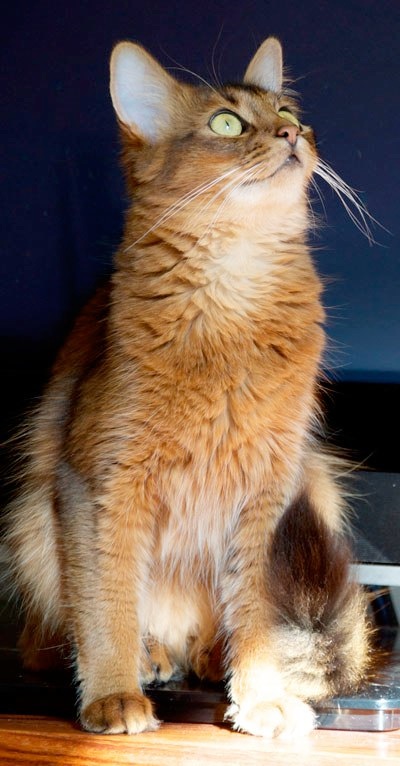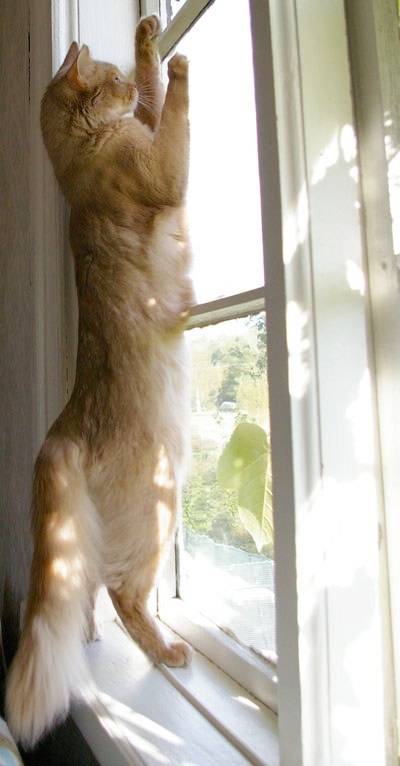SOMALI
The Somali looks like its shorthaired cousin the Abyssinian, but with a semi-long coat.
It is a medium-sized, elegant, graceful and muscular cat breed. The legs are long, and the paws small and oval.
The Somali has a soft wedge-shaped head with graceful lines, rather large ears which can be tufted. The large eyes are almond-shaped, brilliant and expressive with ”eye-liner”. Eye colour can vary from amber to yellow to green.
It is an alert and inquisitive breed with a great deal of hunting instinct.
Like its sibling breed the Abyssinian, the Somali has a ticked coat: each guard hair has distinct colour bands where the darkest colour is always found at the tip of the hair, with a lighter base coat.
The Somali is available in eight approved colours: Ruddy (or usual), sorrel, blue, fawn, silver, sorrel silver, blue silver and fawn silver.
The coat of the Somalis and Abyssinians is unique. Other breeds can have a ticked coat, but then in conjunction with patterns such as stripes or spots. The ticking should consist of at least three bands, but up to ten bands is not incommon. The tail should be foxlike and bushy. A welldevoloped ruff and ”breeches” are favoured. The fur is easy to care for and seldom mats.
SOMALI - HISTORY AND ORIGINS
The Abyssinian is an ancient breed with a history that dates back to at least the C19th. In the beginning of the 20th century purposeful cat breeding was not very developed so it was naturally difficult to keep the breed clean, especially during the World Wars. After the second World War sometimes long-haired kittens showed up in abyssinian litters.
The longhair gene can lie unseen through generations of shorthaired cats and only shows up when two carriers of the longhair gene are mated. The unwanted longhaired kittens were generally hidden away until in the sixties, and in 1977 the somali was approved by the CFA as a breed of its own.
TEMPERAMENT
When I got my first Somali the general epithet was ”Too much of everything”, and sometimes one hears them described as ”ticked terrorists”. Elisabeth, Pixies breeder told us that when she got her first somali she thought ”Did I buy a monkey?” Which gives you an idea of how active they can be. Curious, sociable and with a healthy appetite.
They like climbing, and enjoy the company of another cat. My two first somalis lived to the ages of 14 and 16, and kept well-muscled and active throughout- though they mellowed a bit with age.
Three out of four of mine have been extremely affectionate, demanding cuddles every day. Pixie (the fourth) is happy with being carried around, some kisses and strokes and of course being readily admired. Preferably sitting on my laptop, where she has discovered several unknown key combinations and made odd google searches.


